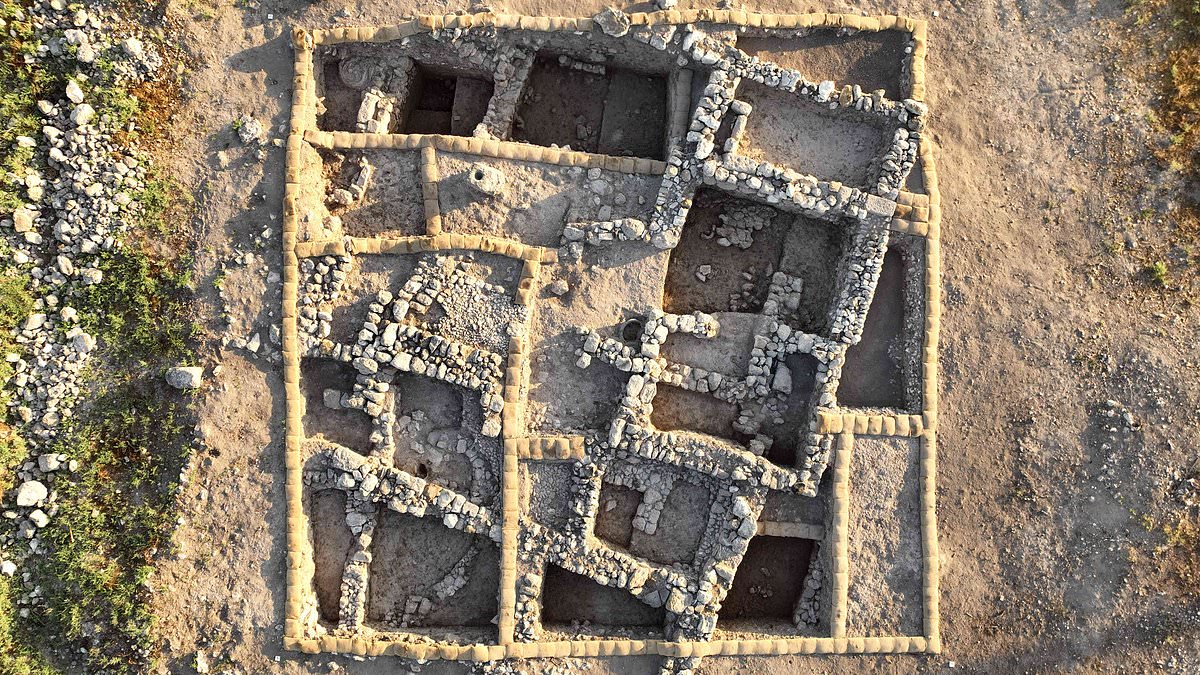A grisly Bible story about an ancestor of Jesus may be true, jaw-dropping new evidence from Armageddon suggests.
In the Book of Revelation, Armageddon is where the apocalyptic final clash between good and evil takes place before a new world is born.
Today known as Tel Megiddo, the site is also where King Josiah, an ancestor of Jesus, was slain by the Egyptian pharaoh, Necho II, according to the Bible.
Now the first archaeological evidence has been found to support the tale, after excavations revealed proof of an Egyptian presence at the site during Josiah’s time.
Assaf Kleiman of Ben Gurion University, co-author of a new study about the discoveries, said the findings were a ‘big surprise’ for archaeologists.
He added: ‘Our recent excavations near the administrative quarter of Megiddo revealed the remains of a large structure dated to the late seventh century BC.
‘Within this building, we have found high quantities of crude and straw-tempered pottery vessels imported from Egypt, as well as a few East Greek vessels.
‘The exposure of these findings was a big surprise for our team, as these were not unearthed thus far at Megiddo.’
The Greek vessels offer a tantalising clue, archaeologists believe.
Dr Kleiman’s co-author, Israel Finkelstein of the University of Haifa and Tel Aviv University, said: ‘The Greek pottery is usually considered as representing Greek mercenaries.
‘From sources such as Herodotus and the Assyrian King, Ashurbanipal, we know that Greeks from Anatolia served as mercenaries in the Egyptian army.
‘This scenario may be linked to the biblical account about the killing of King Josiah of Judah by Pharaoh Necho at Megiddo in 609 BC.’
Josiah, who’s been called the last good king of Judah, is described as a religious reformer in the Bible, ending the worship of any god but Yahweh.
He’s also listed as a paternal ancestor of Jesus in the Gospel of Matthew.
The Old Testament gives varied accounts of his death.
Dr Finkelstein said: ‘The Bible recounts the death of Josiah at Megiddo in two places.
‘He’s killed by Necho during an encounter at Megiddo in the Book of Kings, and killed in a battle with the Egyptians in the Book of Chronicles.
‘Kings gives close to “real time” evidence while Chronicles represents centuries-later thoughts.
‘On this background, the new evidence for an Egyptian garrison, possibly with Greek mercenaries, at Megiddo in the late seventh century BC, may provide the background to the event.
‘Moreover, in two places in prophetic works, Ezekiel and Jeremiah, the Bible hints that west Anatolians – Lydians – were involved in the killing of Josiah.’
The site’s Hebrew name, Har Megiddo – meaning Mount Megiddo – was rendered as Harmagedon in Greek, leading to the modern name, Armageddon.
Why Josiah was killed there is debated.
Some say he and his army blocked the path of Necho II, who was en route to Syria with his troops.
Others say he was summoned as a vassal and executed after failing to pay sufficient tribute to Egypt.
It’s even been suggested that Josiah’s death there is the reason for its apocalyptic reputation.
While this new evidence does not tell us much about the details of Josiah’s death, it does point to Necho’s military presence at Armageddon around that time.
‘It would make sense to place the [final] battle out there due to Israel’s history of that location,’ argues Hope Bolinger at Christianity.com.
Dr Kleiman, Dr Finkelstein, and their colleagues Matthew Adams and Alexander Fantalkin published their study in the Scandinavian Journal of the Old Testament.
No physical description of Jesus is found in the Bible.
He’s typically depicted as Caucasian in Western works of art, but has also been painted to look as if he was Latino or Aboriginal.
It’s thought this is so people in different parts of the world can more easily relate to the Biblical figure.
The earliest depictions show him as a typical Roman man, with short hair and no beard, wearing a tunic.
It is thought that it wasn’t until 400AD that Jesus appears with a beard.
This is perhaps to show he was a wise teacher, because philosophers at the time were typically depicted with facial hair.
The conventional image of a fully bearded Jesus with long hair did not become established until the sixth century in Eastern Christianity, and much later in the West
Medieval art in Europe typically showed him with brown hair and pale skin.
This image was strengthened during the Italian Renaissance, with famous paintings such as The Last Supper by Leonardo da Vinci showing Christ.
Modern depictions of Jesus in films tend to uphold the long-haired, bearded stereotype, while some abstract works show him as a spirit or light.
